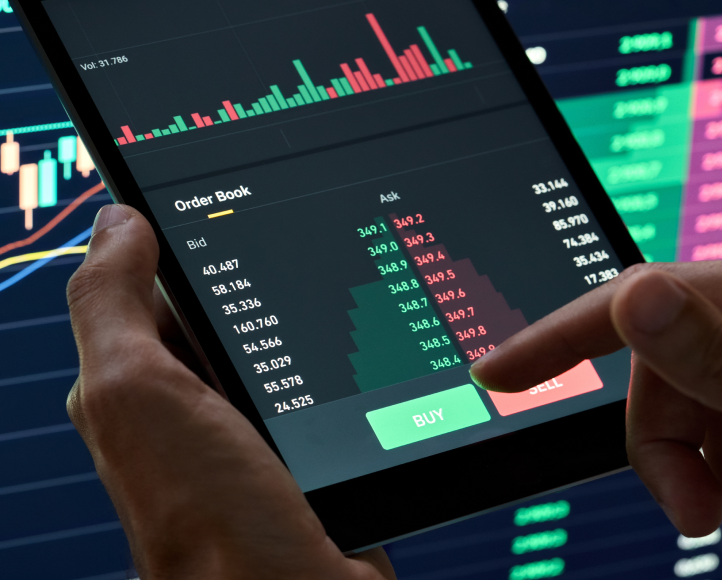
The Ultimate Guide to Crypto Trading Timing
In the rapidly evolving world of cryptocurrencies, mastering crypto trading timing is essential for traders seeking to optimize their investments. Whether you are a beginner or an experienced trader, understanding when to enter and exit a trade can significantly affect your profitability. Trading cryptocurrencies is not merely about choosing the right coin to invest in; it’s also about strategic timing. To learn more about timing strategies, Crypto Trading Timing click here for additional resources.
Understanding Market Trends
The cryptocurrency market is notorious for its volatility, often experiencing rapid price fluctuations within short time frames. Recognizing these market trends is crucial to effective trading. Uptrends indicate periods when the price of a cryptocurrency is rising, while downtrends signify declining prices. Identifying these trends can provide traders with valuable insights into the optimal times to buy and sell.
Traders can employ various tools and techniques to analyze market trends, such as moving averages, trend lines, and indicators like the Relative Strength Index (RSI). By analyzing historical data and current market movements, traders can make informed decisions on when to execute trades.
Technical Analysis For Timing Trades
Technical analysis involves using statistical trends from trading activity, such as price movement and volume, to forecast future price movements. One of the main objectives of technical analysis is to determine entry and exit points for trades. Popular indicators include:
- Moving Averages: Moving averages smooth out price data to identify trends over a specific period. Traders often use the 50-day and 200-day moving averages to determine support and resistance levels.
- Bollinger Bands: This indicator helps traders understand price volatility and identify overbought or oversold conditions in the market.
- Fibonacci Retracement Levels: These levels help traders identify potential reversal points by calculating the ratios between key numbers in the Fibonacci sequence.
By integrating these tools into their trading strategies, traders can better time their trades, potentially leading to higher returns.
Fundamental Analysis and Timing
While technical analysis focuses on price movement, fundamental analysis looks at the underlying factors that may influence the value of a cryptocurrency. This includes examining news releases, technological advancements, regulatory changes, and market sentiment. Understanding these factors can assist traders in making educated decisions regarding the timing of their trades.
Major announcements, such as a partnership or a technological breakthrough, can lead to significant price movements. A trader who remains attuned to these developments can capitalize on the subsequent price rises or falls. News cycles and social media trends can also affect market perceptions and provide insight into potential price movements.
Psychology of Trading Timing
The psychology behind trading plays a significant role in determining timing. Fear and greed are powerful emotions that can lead traders to make irrational decisions. For instance, during a market surge, traders may feel compelled to buy in fearing they will miss out on profits, often leading to buying at inflated prices. Conversely, in a downward spiral, panic selling can occur, resulting in losses.

Understanding the psychological factors at play can help traders maintain a level-headed approach to timing their trades. Developing patience and sticking to a well-formulated trading plan can mitigate the risks associated with emotional trading.
Choosing the Right Time Frame
Different traders have varying time frames in which they operate, often categorized as day trading, swing trading, or long-term investing. The chosen strategy influences the timing of trades:
- Day Trading: Involves making multiple trades within a single day, capitalizing on short-term price movements. Timing is crucial, as day traders must be vigilant about market fluctuations and execute trades quickly.
- Swing Trading: This strategy attempts to capture gains within a few days to several weeks. Swing traders focus on short to medium-term trends and use both technical and fundamental analysis to time their trades.
- Long-term Investing: Investors take positions with the intent of holding for several months or even years. Timing is less critical for this strategy, but understanding large-scale market trends remains important.
Traders should align their timing strategies with their trading style to maximize effectiveness.
Utilizing Trading Bots and Automated Tools
With the rise of technology in trading, automated trading bots have become a popular option for many traders. These bots can execute trades automatically based on predefined criteria, allowing them to capitalize on market opportunities no matter the time of day. Setting up a trading bot requires careful planning and a clear understanding of the market, but it allows traders to maintain a disciplined approach, which can improve timing decisions.
Nonetheless, traders should remain cautious and regularly monitor their bots to ensure they are performing as expected, as market conditions can change rapidly.
Avoiding Common Mistakes
Traders, regardless of experience, can fall victim to timing mistakes. Some common pitfalls include:
- Failing to set stop-loss orders, which can lead to significant losses if a trade goes against the investor.
- Overtrading due to emotional decisions, which can corner traders into unfavorable positions.
- Ignoring market news that may impact pricing.
Learning from these mistakes can help traders refine their strategies and improve their timing decisions in future trades.
Conclusion
Effective crypto trading timing is essential for success in the unpredictable landscape of cryptocurrency investments. By understanding market trends, employing technical and fundamental analysis, mastering psychological aspects, and leveraging technology, traders can enhance their timing skills. Moreover, continuous learning from mistakes is paramount to developing a successful trading strategy. As the crypto market continues to evolve, staying informed and adaptable will be key to managing trades effectively and achieving financial goals.